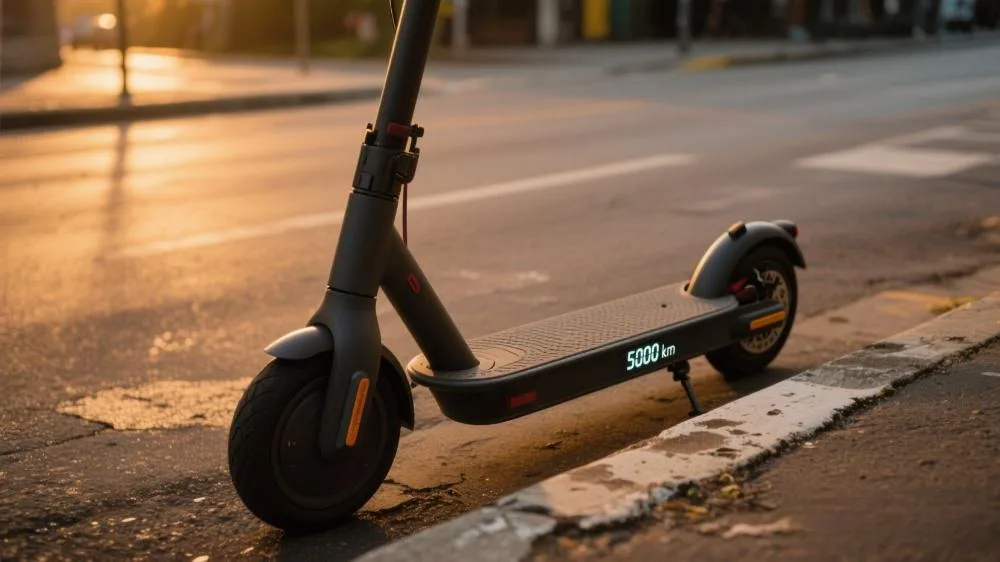how long does an electric scooter last

How long does an electric scooter last? According to the European Micromobility Association’s 2025 research report, mainstream electric scooters typically last between 2.5 to 5 years. However, actual lifespan can vary by up to 300% depending on usage patterns. Professional content platform Novascooter’s survey of 3,000 European and American users revealed that approximately 43% of consumers significantly underestimate maintenance’s impact on product longevity, while 27% experience premature device failure due to improper usage habits.
An e-scooter’s lifespan depends on multiple critical factors. TÜV Rheinland’s 2025 durability standards specify that qualified products must maintain at least 80% battery capacity after 500 full charge cycles, demonstrate no more than 15% motor power reduction after 1,000 operating hours, and show no structural damage after 100,000 vibration tests. How do these technical specifications translate to real-world usage? What factors most affect e-scooter longevity? And how can proper maintenance extend service life? This article provides comprehensive answers based on the latest industry data and real-user case studies.

1. Core Component Lifespan Analysis
1.1 Power Battery: The Heart of Your E-Scooter
Battery Types and Lifespan Variations
Current market offerings primarily include lithium-ion batteries and emerging solid-state batteries. Lithium-ion remains the dominant choice, holding 89% market share in 2025. Among these, NMC batteries suit premium models with 500-800 charge cycles, while LFP batteries for commercial models achieve 1,200-2,000 cycles. Solid-state technology, according to 2025 MIT Lab research, delivers up to 3,000 cycles.
To calculate practical lifespan: multiply rated cycles by battery capacity, then divide by daily consumption multiplied by 365 days. For example, a model with 10.4Ah battery (≈360Wh), 600 rated cycles, and 180Wh daily consumption would yield approximately 3.3 years.
Battery degradation follows distinct phases. UC Berkeley’s 2025 study shows initial rapid capacity loss (≈8% annually during first 200 cycles), followed by stabilization (≈3% annually for cycles 200-500), then accelerated decline (≈12% annually post-500 cycles).
1.2 Motor System: Ensuring Consistent Performance
Motor Types and Durability
Three main motor types exist: brushed motors in entry-level models last 1,000-1,500 hours; brushless motors in mid-range models endure 3,000-5,000 hours; hub motors in premium models withstand 5,000-8,000 hours.
Key Factors Affecting Motor Life
Per EU Mechanical Engineering Standards 2025, temperature critically impacts longevity – every 10°C increase reduces lifespan by 30%. Continuous 20% overload decreases durability by 40-50%, while humid environments cut bearing life by 60%.
2. How Usage Habits Impact Longevity
2.1 Charging Behavior Effects
Optimal Charging Practices
Battery University’s 2025 research indicates maintaining 20%-80% charge extends battery life 2-3 times. Avoid overnight charging, particularly fast-charging modes. Monthly full discharge cycles help maintain calibration.
Temperature management proves equally crucial. Ideal charging occurs between 10-30°C. Below 0°C charging increases battery damage by 400%, while above 45°C risks thermal runaway.
2.2 Riding Style Consequences
Acceleration and Braking
London Transport University’s 2025 findings show frequent hard acceleration (>5 times/km) reduces motor life by 25%. Excessive emergency braking (>3 times/km) doubles brake wear.
Load and Terrain
10kg overload decreases frame fatigue life by 30%. Routes with >20% incline cause 40% higher motor temperatures.
3. Maintenance Guide to Extend Lifespan
3.1 Weekly Maintenance Checklist
Maintain tire pressure within ±10% of manufacturer specifications. Inspect bolt tightness, particularly folding mechanisms. Regularly test brake responsiveness.
3.2 Monthly Deep Maintenance
Lubricate bearings with specialized grease. Clean battery contacts with isopropyl alcohol. Remove dust from motor ventilation ports.
3.3 Seasonal Considerations
Winter Protection
Use thermal covers for batteries in <-5°C conditions. Reduce tire pressure 10-15% for better traction. Shorten maintenance intervals in snowy regions.
Summer Precautions
Avoid midday charging during heatwaves. Increase brake pad inspection frequency. Regularly check tire hardness to prevent blowouts.
4. End-of-Life Indicators and Disposal
4.1 Retirement Signals
Battery warnings include <50% original range, 30%+ longer charging times, or >15°C temperature differentials. Structural red flags encompass visible cracks, loose steering components, or unsecured folding mechanisms.
4.2 Eco-Friendly Disposal
EU WEEE Directive requires professional battery recycling. Most brands offer trade-in programs, while communities often host monthly collection events.
Conclusion: Smart Usage for Maximum Longevity
Global e-scooter ownership will likely exceed 120 million by 2025. While new models boast 5-8 year design lifespans, the same scooter may last 2-6 years depending on care – proving maintenance paramount. The EU Circular Economy Action Plan 2025 notes extending e-scooter lifespans could prevent 230,000 tons of annual e-waste. For consumers, proper maintenance delivers both better value and environmental responsibility. Remember: Your e-scooter’s lifespan depends 30% on quality and 70% on care.
